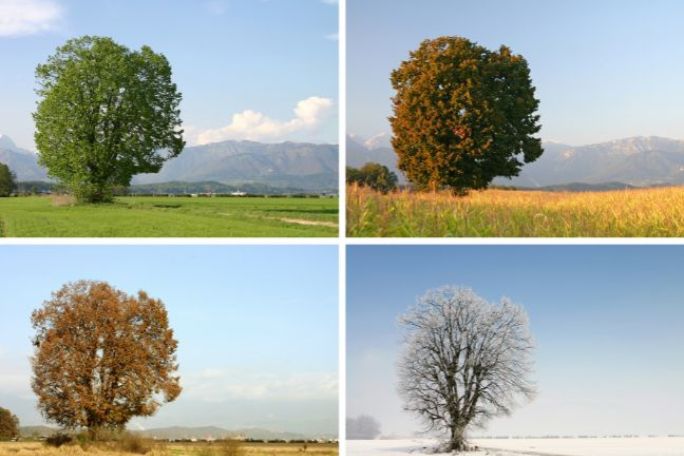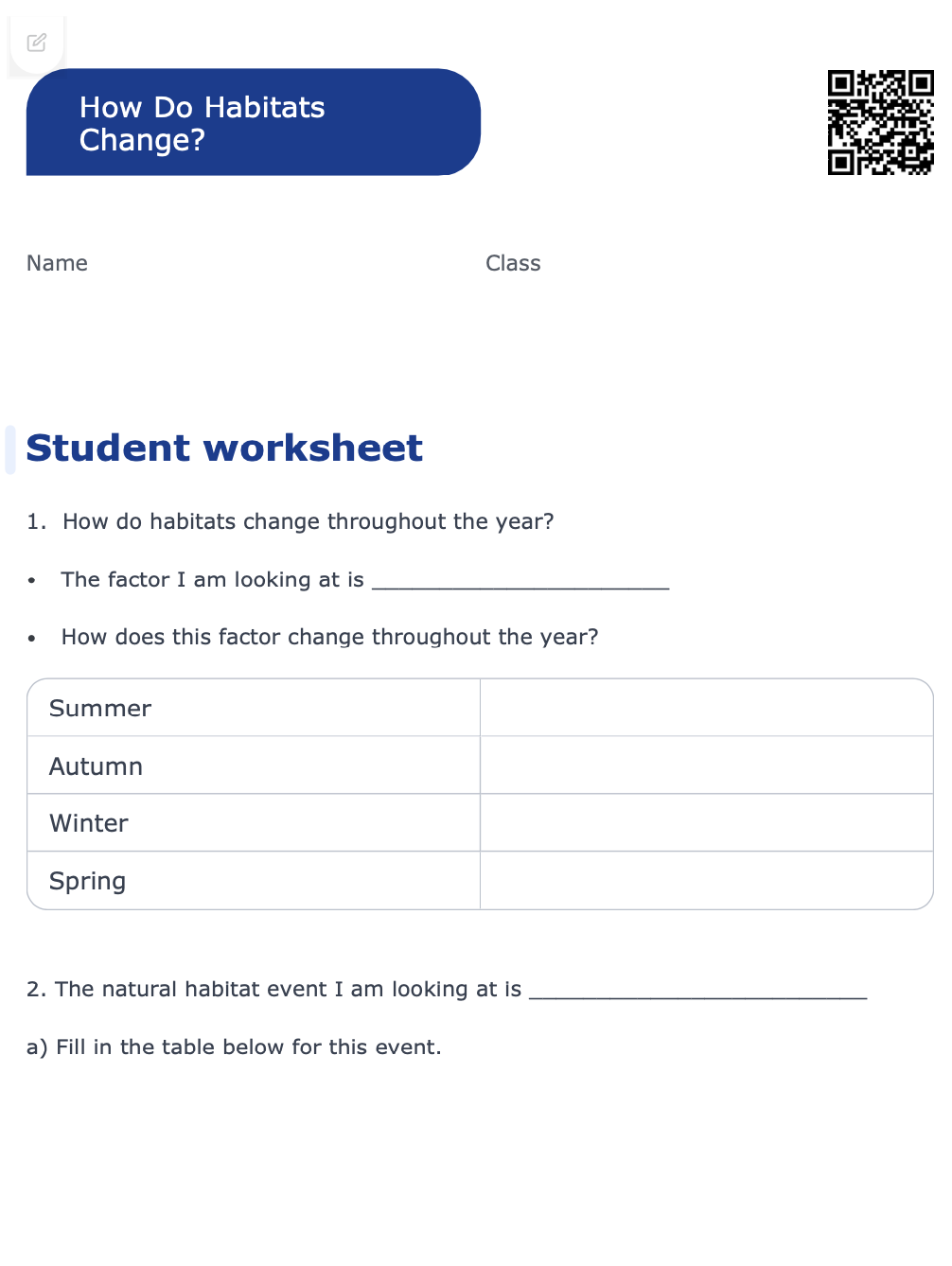Lesson summary
Students will explore how habitats change naturally over time, including short-term changes, annual cycles and long-term changes.
Learning intentions:
Students will...
- develop an understanding of how habitat can be impacted both by rapid and slow change processes.
Success criteria:
Students can...
- describe natural changes to habitats
- discuss the impacts of this changing habitat on the living things of that habitat.
Lesson guides and printables
Curriculum links
Select your curriculum from the options below.
Lesson details
Skills
This lesson is designed to build students’ competencies in the following skills:
- creativity
- critical thinking
- collaboration
- communication
- curiosity
- empathy
- ethical understanding
- global citizenship
- reflection
Curriculum Mapping
Australian Curriculum (v9.0) content description: Year 6 Science
- Investigate the physical conditions of a habitat and analyse how the growth and survival of living things is affected by changing physical conditions AC9S6U01
Relevant parts of Year 6 achievement standards:
Students can explain how changes in physical conditions affect living things.
Syllabus outcomes: ST1-4LW-S
General capabilities: Critical and Creative Thinking
Cross-curriculum priority: Sustainability
UN Sustainable Development Goals
UN SDG 15: Protect, restore and promote sustainable use of terrestrial ecosystems, sustainably manage forests, combat desertification, and halt and reverse land degradation and halt biodiversity loss.
- Target 15.5: Take urgent and significant action to reduce the degradation of natural habitats, halt the loss of biodiversity and, by 2020, protect and prevent the extinction of threatened species
Resources Required
- Device capable of displaying audio-visual material
Additional Info
This unit of lessons, along with the other units in the Skills and Jobs For a Transitioned Economy package, aim to teach students how to be climate solution entrepreneurs. These lessons will equip students with the relevant skills and knowledge of jobs and career pathways that will be able to sustain our economy once it has transitioned away from fossil fuels. Cool.org thanks our philanthropic partners, the Lord Mayor’s Charitable Foundation and Boundless Earth, for their generous contributions in helping us to create these resources.
Level of teacher scaffolding: Medium – present information, facilitate class discussion.
Related Professional Learning
Inspire Young Scientists in the Primary Classroom
Quick Summary - This course will help you teach science in the primary classroom. You will discover how to develop the scientific literacy of students and motivate their interest in learning science.




Welcome back!
Don't have an account yet?
Log in with:
Create your free Cool.org account.
Many of our resources are free, with an option to upgrade to Cool+ for premium content.
Already have an account?
Sign up with:
By signing up you accept Cool.org's Terms and Conditions(Opens in new tab) and Privacy Policy(Opens in new tab).